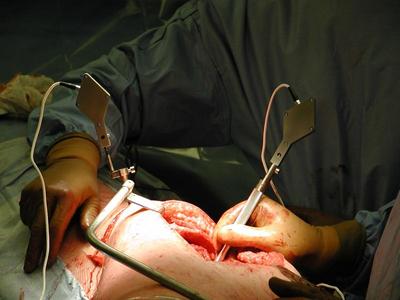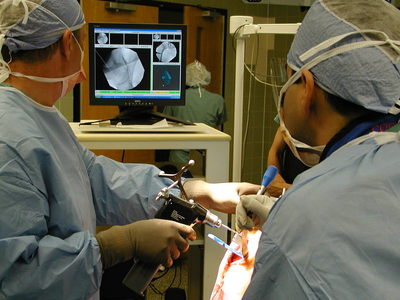


|
A fundamental step in computer-assisted surgery is registration where the anatomy of the patient is matched to an image or model of the anatomy. For some types of orthopaedic procedures, registration is performed by digitizing the locations of points on the surface of a bone and matching the point locations to the surface of a model of the bone. Here, a surgeon uses a pointer that is tracked using an optical tracking system to measure registration point locations on a patient. A registration algorithm is used to compute the transformation that best matches the points to a model of the anatomy. |

|
Virtual navigational information (such as where to drill or cut the bone) can be provided to the surgeon after the registration transformation has been established. Here, a surgeon is using a tracked surgical drill to drill a hole along a pre-operatively defined path. Notice that the surgeon looks at the virtual navigational information instead of the patient when performing this task. |
Computer-assisted surgical navigation depends on having an accurate registration. If the estimated registration is inaccurate then the navigational information will also be inaccurate, which may lead to errors in the surgical procedure. It is of great interest to know the accuracy of the estimated registration.
Derive an equation for one measure of the expected registration error and validate the accuracy of the equation using computer simulations.